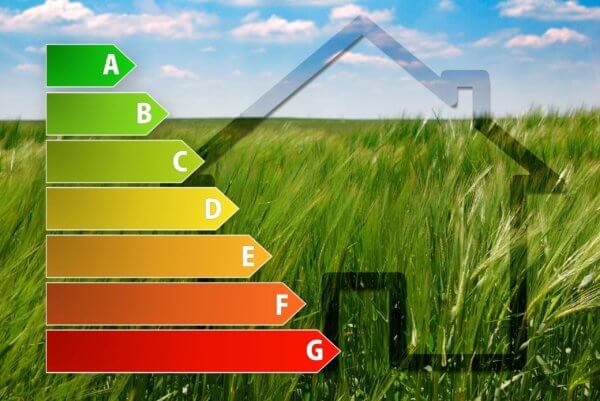What You Need to Know About the California Seer Changes in 2023
The DOE (Department of Energy) has recently announced some changes to residential energy efficiency standards. This mostly affects the SEER ratings for heating and AC systems, with the DOE increasing the SEER ratings for these units for the upcoming year of 2023. These new regulations might affect your options if you’re due for a replacement heating or AC system. The regulations may also affect the price of the unit since the cost of these regulation changes oftentimes falls on the consumer. Here’s everything you’ll need to know about the DOE energy efficiency standard changes and what to keep in mind if you’re looking for a new heating or AC system in California.
What Are SEER Ratings and How Are They Changing?
SEER stands for “seasonal energy efficiency rating.” Unlike normal EER, which measures energy efficiency primarily during peak temperatures, SEER gets a more general energy-efficiency rating by looking at the entire cooling season and temperature fluctuations. Think of it as the difference between measuring how much energy your AC used during the hottest day in July (EER) versus how much energy your AC used on average over the entire month of July (SEER). EER ratings were used to measure peak system usage each year. However, this was eventually changed to the SEER system as tracking the average energy usage gave a more accurate indication of how energy efficient a unit was.
There are different regulations for heating units, AC units, and mini-split systems. The heating system rating is being raised nationwide from 13 to 14, with the higher number being more energy efficient. Things are a little bit different with AC systems. The SEER rating for AC systems is changing on a regional basis. The United States is split up into three separate regions: North, South/Southeast, and Southwest (which is the region California is part of). The North region is changing from a minimum SEER rating of 13 to a rating of 14, while the South/Southeast and Southwest regions are changing to a minimum SEER rating of 15.
The regions also differ in how they determine which older systems are no longer meeting the new requirements. The North region bases compliance on manufacture date. Any non-compliant equipment manufactured prior to Jan 1, 2023, can be sold and installed. The South/Southeast and Southwest regions are based on installation date. This requires that all non-compliant equipment be installed prior to January 1, 2023, and any remaining non-compliant equipment needs to be sent to states that fall under the North region after the new year. While these regulations have more of an impact on manufacturers and installers of AC and heating systems, it will limit the availability of some older systems that don’t meet the new requirements in some states. You also might end up having to spend more money thanks to this change, mostly because the only systems that will be available are newer and more expensive ones.
What’s the Cost?
Changes in national regulations almost always come with a price increase, and that price increase usually lands on the customer. There’s no need to panic, though. If you are in the market for a new system, you can rest assured that despite the 15-20% price hike to cover the cost of newer technology or more up-to-date AC or heating system manufacturing, you’ll recoup the cost. This is thanks to the money you’ll be saving on your electricity bill due to the lower energy consumption in the long term. If you already have an AC or heating system that works well and doesn’t require much upkeep or maintenance, you probably don’t have to worry too much about the new DOE regulation changes.
These regulations are strictly for new units being installed approaching January 1st. With how energy efficient newer appliances have become in recent years though, it might be time to consider purchasing a new unit and saving some money on your utilities. This is especially true if your unit has a SEER rating of 10 or below.
If you do need to get a new AC or heating system, keeping these new SEER ratings and requirements in mind might be helpful. Knowing the minimum SEER rating for your region can ensure you’re getting a unit that is up to par with what should be the minimum standard for energy efficiency. You’ll also be purchasing a unit that is more environmentally friendly and one that has more upgrades.
What Isn’t Covered by the Change?
While these changes apply mostly to AC units, heating units, and mini-split systems, there are a few types of units these new regulations do not apply to. If you are looking to purchase a hot water heating system or if your home relies on a furnace for heating, these requirements do not apply. In this case, you’re free to purchase whatever system best suits your needs.
How Do You Find the SEER Ratings?
SEER ratings tend to be great selling points for manufacturers, retailers, and installers that sell and install AC and heating systems. Larger systems are usually on the more expensive side, so being able to emphasize the reduced energy costs and a more energy-efficient system can help make such a large purchase easier to swallow for customers. Because it’s such a big selling point, most manufacturers list the SEER rating prominently in the item details online. If you’re shopping in person, manufacturers will list the SEER rating on a big yellow sticker that details the average savings per year the unit will save you in utility bills and other costs.
Next Steps in Upgrading or Buying a New System
While knowing about the SEER requirement changes can definitely help decide what system is best for your home, be it heating, AC, or a mini-split system, it is always best to speak with professional technicians to get more information. These changes affect your system quite a bit, and technicians will be equipped to determine if your current system is in need of an upgrade, what kind of system would work best for your home’s layout and heating or cooling needs, as well as how best to work within your budget to get the biggest bang for your buck. Professional technicians will also be able to set up an inspection of your home and help with planning the installation. In addition, they can provide a reasonable time frame for when the work will be completed by and what to expect in that time frame.
If you’re considering upgrading your heating or AC system or even just have questions about what is involved, call Crystal Blue Plumbing, Heating & Air to discuss your options. We can provide all of the information you need before purchasing a unit. Getting an expert opinion is always worth the effort when planning any kind of home improvement or installation project. Let us help you make the best choice for your Sacramento home.
When you need heating or cooling services in Sacramento, CA, contact our team at Crystal Blue Plumbing, Heating & Air. We also provide plumbing services as well as boilers, UV lights, dehumidifiers, humidifiers, zone control systems, and more. Our team is Navien Level 2 Certified, and we have an A+ rating from the BBB. We’re also EPA and Energy Star certified.







